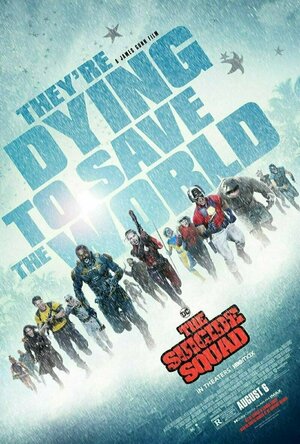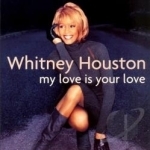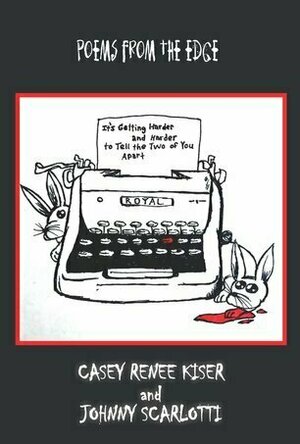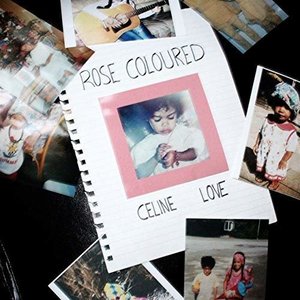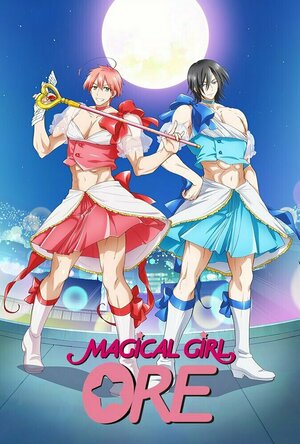Search
Search results
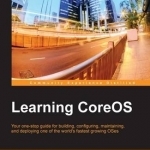
Learning CoreOS
Smiler S. Kingston and Shantanu Agrawal
Book
Your one-stop guide for building, configuring, maintaining, and deploying one of the world's fastest...
Matthew Krueger (10051 KP) rated Mario Party 3 in Video Games
Feb 5, 2021
Let The Party Continue
Mario Party 3- is the third game in the mario party franchise. You have new boards and new mini games. Plus the additon of Waluigi and Daisy. This is the last game on the N64. So it went out with a bang.
The game features duel maps, where two players try to lower each other's stamina to zero using non-player characters such as Chain Chomps.
Mario and his friends witness the descent of the Millennium Star, a mystical star born once every thousand years that allows whoever possesses him to become the "Superstar of the universe". When the group begins to debate the Star's ownership, the Star transports the group into a large toy box and proclaims that the group members must prove their worthiness and earn the Millennium Star's acceptance by collecting the seven "Star Stamps" scattered across several lands.
Green spaces marked with a Shy Guy initiate a single-player Game Guy mini-game, in which the player may either win a multiplied amount of their coins or lose all of their coins
The players can obtain items for use on the board, and can each carry up to three at a time.
Mario Party 3 includes a Duel mode, in which two players use a selection of up to two partners to attack their opponent and deplete their health. The partners can be positioned in front of or behind the player,[and must be paid a salary at the beginning of each turn; the partner will leave if their salary cannot be paid. The partners do the battling to reduce the opponent's health, and defend the player from incoming attack. Each partner has its own health, and if it reaches zero, they disappear, and if the attacking partner deals more damage than the defending partner can take, the player takes damage equal to the difference.
In the Story Mode to the series, one player starts a campaign through every board, challenging computer controlled opponents at a shortened version of Party Mode. The player's objective is to defeat the other characters and earn stamps from the Millennium Star. After all seven stamps are acquired the player is challenged to a final duel with the Millennium Star, in which the player must hit the Millennium Star three times (six times on Normal difficulty and nine on Hard difficulty) with stars in order to defeat story mode. Each time the player completes an objective, they are given a rank of S to C depending on how well they completed that objective. When all the objectives have been completed, a title representing the player's overall progress in the game is awarded. This is determined by the ranks they earned for each objective. If enough "S" ranks are acquired, that character becomes a "Miracle Star" and the Game Guy Room in the Mini Game House is opened for use. Simply beating the Story Mode and not earning a high title will cause the character's face to be sculpted into the mountain.
Its a fun game and the last of the N64 triolgy.
The game features duel maps, where two players try to lower each other's stamina to zero using non-player characters such as Chain Chomps.
Mario and his friends witness the descent of the Millennium Star, a mystical star born once every thousand years that allows whoever possesses him to become the "Superstar of the universe". When the group begins to debate the Star's ownership, the Star transports the group into a large toy box and proclaims that the group members must prove their worthiness and earn the Millennium Star's acceptance by collecting the seven "Star Stamps" scattered across several lands.
Green spaces marked with a Shy Guy initiate a single-player Game Guy mini-game, in which the player may either win a multiplied amount of their coins or lose all of their coins
The players can obtain items for use on the board, and can each carry up to three at a time.
Mario Party 3 includes a Duel mode, in which two players use a selection of up to two partners to attack their opponent and deplete their health. The partners can be positioned in front of or behind the player,[and must be paid a salary at the beginning of each turn; the partner will leave if their salary cannot be paid. The partners do the battling to reduce the opponent's health, and defend the player from incoming attack. Each partner has its own health, and if it reaches zero, they disappear, and if the attacking partner deals more damage than the defending partner can take, the player takes damage equal to the difference.
In the Story Mode to the series, one player starts a campaign through every board, challenging computer controlled opponents at a shortened version of Party Mode. The player's objective is to defeat the other characters and earn stamps from the Millennium Star. After all seven stamps are acquired the player is challenged to a final duel with the Millennium Star, in which the player must hit the Millennium Star three times (six times on Normal difficulty and nine on Hard difficulty) with stars in order to defeat story mode. Each time the player completes an objective, they are given a rank of S to C depending on how well they completed that objective. When all the objectives have been completed, a title representing the player's overall progress in the game is awarded. This is determined by the ranks they earned for each objective. If enough "S" ranks are acquired, that character becomes a "Miracle Star" and the Game Guy Room in the Mini Game House is opened for use. Simply beating the Story Mode and not earning a high title will cause the character's face to be sculpted into the mountain.
Its a fun game and the last of the N64 triolgy.
Johnny Marr recommended track Gimme Danger by Iggy And The Stooges in Michigan Palace, 10/6/73 by Iggy And The Stooges in Music (curated)
Bob Mann (459 KP) rated The Suicide Squad (2021) in Movies
Aug 10, 2021
Anarchic and very funny script, with some great visual gags (1 more)
Elba, Davis and Robbie all great. As is new name Daniela Melchior.
What a difference a "The" makes! The original "Suicide Squad" from 2016 was a botched and lacklustre affair, getting just 5/10 from me. James Gunn's semi-reboot is hyper-violent, overlong, totally ludicrous but a whole bunch of fun.
Positives:
- "From the horribly beautiful mind of James Gunn" gushes the trailer. But in this case, they ain't kidding. The film is (at times) hugely inventive in its visual gags as well as its dialogue. On the DC/Marvel superhero spectrum, this is right up at the "Ragnarok" end in terms of comedy value. It made me guffaw a good dozen times.
- To match that, the action scenes are suitably ludicrous and over-the-top. They feature the most "out there" big-boss since Mr Stay Puft terrorised New York in the original "Ghostbusters"!
- All the cast seem to be having a blast, which carries you, as the audience, along with the fun. Both Viola Davis and Idris Elba add real gravitas at the middle of it all, but Robbie's reprise of Harley Quinn tends to get all the best lines and the most memorable sequences. Her petal-strewn decimation of a platoon of security guards is something to behold.
- But of the lesser-known names, it's Daniela Melchior who really stood out for me as Cleo Cazo - Ratcatcher 2. This appears to be the first non-Portuguese feature she's done, and a great future beckons I think. Such extraordinary screen presence! Loved her character too: a "millennial" who sleeps in and questions what an OHP is!
- Great music choices, as you would expect from the "Guardians of the Galaxy" guy.
Negatives:
- Like Polka-Dot's mum, the comedy style is all over the place! (You have to have watched the movie to understand that gag!). I guess that's true of any comedy, but a number of the jokes feel contrived and didn't fully land.
- There is just so much gratuitous violence in this one that I am frankly amazed that the BBFC awarded it only a UK "15" certificate (this is my second query in a row to the BBFC - they need to employ me!). I reckon this will prove to have the highest body count of any movie in 2021. It's all done in a comic-book style, but when "Army of the Dead" (review still to follow) gets an "18", I'm not quite sure why this is much different.
Summary Thoughts on "The Suicide Squad": I'd mentally set myself up to really hate this one. But the opposite turned out to be true. As a comedy it made me laugh like a drain at times, and although some of the violence went somewhat over the top for me, I thought it to be a fine summer popcorn blockbuster (but very much for adults).
(For the full graphical review, please check out One Mann's Movies on the web, Facebook and Tiktok. Thanks).
Positives:
- "From the horribly beautiful mind of James Gunn" gushes the trailer. But in this case, they ain't kidding. The film is (at times) hugely inventive in its visual gags as well as its dialogue. On the DC/Marvel superhero spectrum, this is right up at the "Ragnarok" end in terms of comedy value. It made me guffaw a good dozen times.
- To match that, the action scenes are suitably ludicrous and over-the-top. They feature the most "out there" big-boss since Mr Stay Puft terrorised New York in the original "Ghostbusters"!
- All the cast seem to be having a blast, which carries you, as the audience, along with the fun. Both Viola Davis and Idris Elba add real gravitas at the middle of it all, but Robbie's reprise of Harley Quinn tends to get all the best lines and the most memorable sequences. Her petal-strewn decimation of a platoon of security guards is something to behold.
- But of the lesser-known names, it's Daniela Melchior who really stood out for me as Cleo Cazo - Ratcatcher 2. This appears to be the first non-Portuguese feature she's done, and a great future beckons I think. Such extraordinary screen presence! Loved her character too: a "millennial" who sleeps in and questions what an OHP is!
- Great music choices, as you would expect from the "Guardians of the Galaxy" guy.
Negatives:
- Like Polka-Dot's mum, the comedy style is all over the place! (You have to have watched the movie to understand that gag!). I guess that's true of any comedy, but a number of the jokes feel contrived and didn't fully land.
- There is just so much gratuitous violence in this one that I am frankly amazed that the BBFC awarded it only a UK "15" certificate (this is my second query in a row to the BBFC - they need to employ me!). I reckon this will prove to have the highest body count of any movie in 2021. It's all done in a comic-book style, but when "Army of the Dead" (review still to follow) gets an "18", I'm not quite sure why this is much different.
Summary Thoughts on "The Suicide Squad": I'd mentally set myself up to really hate this one. But the opposite turned out to be true. As a comedy it made me laugh like a drain at times, and although some of the violence went somewhat over the top for me, I thought it to be a fine summer popcorn blockbuster (but very much for adults).
(For the full graphical review, please check out One Mann's Movies on the web, Facebook and Tiktok. Thanks).
Emeli Sande recommended My Love Is Your Love by Whitney Houston in Music (curated)
<a href="https://amzn.to/2Wi7amb">Wishlist</a>; | <a
<a href="https://diaryofdifference.com/">Blog</a>; | <a href="https://www.facebook.com/diaryofdifference/">Facebook</a>; | <a href="https://twitter.com/DiaryDifference">Twitter</a>; | <a href="https://www.instagram.com/diaryofdifference/">Instagram</a>; | <a href="https://www.pinterest.co.uk/diaryofdifference/pins/">Pinterest</a>;
<img src="https://diaryofdifference.com/wp-content/uploads/2020/09/Book-Review-Banner-79.png"/>;
I don’t always read poetry, but I won "It's Getting Harder and Harder To Tell the Two of You Apart" by Casey Renee Kiser and Johnny Scarlotti through a giveaway on LibraryThing.
And if you are already familiar with my “reading rules”, you know I try and read every single book I have ever received, because it’s only fair. And sometimes, the most unexpected books and the ones we don’t actively search for tend to surprise us the most. That happened with this book as well!
"It's Getting Harder and Harder To Tell the Two of You Apart" is written by two authors - two amazing writers of poetry, who have a very similar style of horror and suspense, but also very distinctive differences in their writing style too. The book is split in two parts, and we get the chance to explore both worlds.
<b>Part 1 - Casey Renee Kiser</b>
The first part of the book was written by Casey Renee Kiser, and my favorite poem was “I am not a ghost yet”. It is morbid and powerful, and I loved the way the feelings and scenes were amplified in a morbid sense. I love the brutality of the writing.
<b><i>“Everything was beautiful the day you died”,
You said as you touched my cold hand. </i></b>
<b>Part 2 - Johnny Scarlotti</b>
I could instantly see the difference in the poems between the two poets, but at the same time, also admire how similar their styles and themes are. I find Johnny’s writing very creepy, much creepier than Casey’s. Especially when the mood suddenly changes and the random “haha’s” and “woahh’s” in the poems appear.
<b><i>Now I’m dashing through the park clipping
Children’s kite strings
Ha ha, that’s what you get, you little freaks!</i></b>
It felt like I was reading the secret diary of the Joker. Either him, or Pennywise. It was so fucked up, but it read as the new normal, which is what a psycho would think and feel. It was creepy, it was wrong, but at the same time it satisfied my curiosity. I think that may be the same curiosity that makes me watch true crime shows, crime confessions and old interview with Ted Bundy. And I really enjoyed it.
If I could change anything about my experience with this book, I would have read this for Halloween. I think it would have been the perfect experience, next to a lot of red candles and dim lighting, alongside some quiet creepy music.
I would recommend "It's Getting Harder and Harder To Tell the Two of You Apart" to all fans of horror poetry - it is dark and twisty, brutally honest and creepy, and it will pull you over to the dark side, even for a day.
<a href="https://diaryofdifference.com/">Blog</a>; | <a href="https://www.facebook.com/diaryofdifference/">Facebook</a>; | <a href="https://twitter.com/DiaryDifference">Twitter</a>; | <a href="https://www.instagram.com/diaryofdifference/">Instagram</a>; | <a href="https://www.pinterest.co.uk/diaryofdifference/pins/">Pinterest</a>;
<img src="https://diaryofdifference.com/wp-content/uploads/2020/09/Book-Review-Banner-79.png"/>;
I don’t always read poetry, but I won "It's Getting Harder and Harder To Tell the Two of You Apart" by Casey Renee Kiser and Johnny Scarlotti through a giveaway on LibraryThing.
And if you are already familiar with my “reading rules”, you know I try and read every single book I have ever received, because it’s only fair. And sometimes, the most unexpected books and the ones we don’t actively search for tend to surprise us the most. That happened with this book as well!
"It's Getting Harder and Harder To Tell the Two of You Apart" is written by two authors - two amazing writers of poetry, who have a very similar style of horror and suspense, but also very distinctive differences in their writing style too. The book is split in two parts, and we get the chance to explore both worlds.
<b>Part 1 - Casey Renee Kiser</b>
The first part of the book was written by Casey Renee Kiser, and my favorite poem was “I am not a ghost yet”. It is morbid and powerful, and I loved the way the feelings and scenes were amplified in a morbid sense. I love the brutality of the writing.
<b><i>“Everything was beautiful the day you died”,
You said as you touched my cold hand. </i></b>
<b>Part 2 - Johnny Scarlotti</b>
I could instantly see the difference in the poems between the two poets, but at the same time, also admire how similar their styles and themes are. I find Johnny’s writing very creepy, much creepier than Casey’s. Especially when the mood suddenly changes and the random “haha’s” and “woahh’s” in the poems appear.
<b><i>Now I’m dashing through the park clipping
Children’s kite strings
Ha ha, that’s what you get, you little freaks!</i></b>
It felt like I was reading the secret diary of the Joker. Either him, or Pennywise. It was so fucked up, but it read as the new normal, which is what a psycho would think and feel. It was creepy, it was wrong, but at the same time it satisfied my curiosity. I think that may be the same curiosity that makes me watch true crime shows, crime confessions and old interview with Ted Bundy. And I really enjoyed it.
If I could change anything about my experience with this book, I would have read this for Halloween. I think it would have been the perfect experience, next to a lot of red candles and dim lighting, alongside some quiet creepy music.
I would recommend "It's Getting Harder and Harder To Tell the Two of You Apart" to all fans of horror poetry - it is dark and twisty, brutally honest and creepy, and it will pull you over to the dark side, even for a day.
Bong Mines Entertainment (15 KP) rated Rose Coloured - Single by Celine Love in Music
Jul 10, 2019
Celine Love is a London-based singer-songwriter from Hamburg. Not too long ago, she released a music video for her debut single, entitled, “Rose Coloured”.
“The music video (directed by Sylvia Hong) explores how that darkness we are shielded from as children were always there. A lot of us may think back to our childhood as perfect when truly we have blocked out the negative we might have seen or experienced. If we do not confront these issues from the past, it can drive you insane.” – Celine Love
‘Rose Coloured’ tells an interesting tale of a happy young girl who wants to use love to erase darkness.
Apparently, her caramel skin differs from her friends’ vanilla skin tone. But she doesn’t see the difference between her and them.
Even though they trust each other, she still has to look at life through a rose-colored filter.
‘Rose Coloured’ contains a relatable storyline, pleasing vocals, and lush instrumentation flavored with contemporary R&B and neo-soul elements.
“The idea behind ‘Rose Coloured’ was to capture memories, moments and situations that describe the blissful ignorance of my childhood. The desire to put a rose-colored filter on everything that is bad in the world. Before racism, insecurities, heartbreak, or stress became part of life. The world is not only on your side but shields you from the negativity.” – Celine Love
“The imagery in ‘Rose Coloured’ is taken directly from my childhood. The song describes both joy and pain in wanting to relive these moments. Not having to confront the real world with all its social pressures and evils. Growing up in Germany there was a time when I saw my skin color as nothing but ‘caramel’, everyone else was simply ‘vanilla’. The chorus goes ‘I wanna live in a fool’s paradise, show me what love is and we can erase all the darkness.’ The music video reflects this inner conflict.” – Celine Love
A few milestones in Celine Love’s young career include a full scholarship to the music school BIMM Berlin & London.
Not too long ago, she performed at the 2000 Trees in Cheltenham, Kings Jam in Gloucester, Deichbrand and Reeperbahn Festival in Germany, and supported the electro-pop band Years & Years in Hamburg for NRJ Radio.
She composes music with expressionism and self-discovery at its core with a hint of socio-critical commentary.
“The imagery within the song is directly taken from my memories. Writing and recording it left me feeling very nostalgic. So I dug out old photos and songs and reached out to my childhood best friend. It reminded me of a pivotal time as a child, before I became aware of the differences in skin color and hair structure. Not only did I look different from most of the German kids surrounding my life but I would be treated differently too. It wasn’t always negative, but always in a way that made me feel excluded. There was a time before I became aware that my skin color was nothing but ‘caramel’ and everyone else was simply ‘vanilla’. Nothing more. ‘Rose Coloured’ is an almost desperate wish to have that mindset back. The wish to live in a ‘fool’s paradise’. – Celine Love
“The music video (directed by Sylvia Hong) explores how that darkness we are shielded from as children were always there. A lot of us may think back to our childhood as perfect when truly we have blocked out the negative we might have seen or experienced. If we do not confront these issues from the past, it can drive you insane.” – Celine Love
‘Rose Coloured’ tells an interesting tale of a happy young girl who wants to use love to erase darkness.
Apparently, her caramel skin differs from her friends’ vanilla skin tone. But she doesn’t see the difference between her and them.
Even though they trust each other, she still has to look at life through a rose-colored filter.
‘Rose Coloured’ contains a relatable storyline, pleasing vocals, and lush instrumentation flavored with contemporary R&B and neo-soul elements.
“The idea behind ‘Rose Coloured’ was to capture memories, moments and situations that describe the blissful ignorance of my childhood. The desire to put a rose-colored filter on everything that is bad in the world. Before racism, insecurities, heartbreak, or stress became part of life. The world is not only on your side but shields you from the negativity.” – Celine Love
“The imagery in ‘Rose Coloured’ is taken directly from my childhood. The song describes both joy and pain in wanting to relive these moments. Not having to confront the real world with all its social pressures and evils. Growing up in Germany there was a time when I saw my skin color as nothing but ‘caramel’, everyone else was simply ‘vanilla’. The chorus goes ‘I wanna live in a fool’s paradise, show me what love is and we can erase all the darkness.’ The music video reflects this inner conflict.” – Celine Love
A few milestones in Celine Love’s young career include a full scholarship to the music school BIMM Berlin & London.
Not too long ago, she performed at the 2000 Trees in Cheltenham, Kings Jam in Gloucester, Deichbrand and Reeperbahn Festival in Germany, and supported the electro-pop band Years & Years in Hamburg for NRJ Radio.
She composes music with expressionism and self-discovery at its core with a hint of socio-critical commentary.
“The imagery within the song is directly taken from my memories. Writing and recording it left me feeling very nostalgic. So I dug out old photos and songs and reached out to my childhood best friend. It reminded me of a pivotal time as a child, before I became aware of the differences in skin color and hair structure. Not only did I look different from most of the German kids surrounding my life but I would be treated differently too. It wasn’t always negative, but always in a way that made me feel excluded. There was a time before I became aware that my skin color was nothing but ‘caramel’ and everyone else was simply ‘vanilla’. Nothing more. ‘Rose Coloured’ is an almost desperate wish to have that mindset back. The wish to live in a ‘fool’s paradise’. – Celine Love
Jesters_folly (230 KP) rated Magical Girl Ore in TV
Sep 30, 2019
Contains spoilers, click to show
Saki and Sakuyo want to be an Idol duo but when Sakuyo’s brother, Mohiro gets into trouble Saki find that the power of love (and a hand from a fairy) can transform her in to a magic girl with a difference. Now she must juggle working towards her dreams with protecting Mohiro and the world from rampaging demons
Magic Girl Ore is a subversive parody of the normal ‘Magic Girl’ series’, it takes the tropes of series’ like ‘Sailor Moon’ and turns them on their head and it is these subversions that make the show. The story line is, to be honest a bit bland, in most episodes the girls are doing some kind of Idol related activity then the demons turn up and try to kidnap Mohiro, who is always around often for convoluted reason, then the girls change and save the day. Each demon attack seems to get worst, building up to the final plan. It takes a few episode to realise that the formulaic, almost dull nature of the show is deliberate, until the end the action is not really important because what you are watching is a subversion of a genre. If you take any number of shows you can see the same plot, ‘Sailor Moon’, ‘Miraculous’, ‘Power Rangers’ and even ‘Scooby Doo’ all have the same plot, a ‘big Bad’ is trying to take over the world/amusement park and the heroes have to stop them.
There are any number of ‘Magic girl’ series’, the genre started in Japan but soon became popular all over the world with many countries creating their own spin on the idea. Most of the time the main character is a young girl who is given the power to transform into their Magic form to fight evil. This is still the standard plot for ‘Magic Girl Ore’ however; the fairy is a normal looking business man, the transformation changes the school girl into a 20 something muscular man, still in the tradition magic girl dress and the demons are cute and buff, there is a hunky possibly gay feel to the demons. This bring us to the transformations, the magic girls change by concentrating on saving the person they love, with Saki this follows a common theme, the school girl in love with her best friend’s brother, the brother doesn’t know. Then Sakuyo get the power but the person she loves is Saki. It’s also hinted that Mohiro prefers Saki in her male form. There are two other magic girls, Michiru, who’s love is male Saki but she hides her feelings so much that her transformations take more energy and ages her and her partner, Ruka who’s love is Michiru.
‘Magic Girl Ore’ could have easily fallen into concentrating on these relationships turning the series into a LGB.. statement but it doesn’t, girls like girls or magic girl men or men who like men but it’s just treated as the way it is and, I think that is the right way to do it.
Over all ‘Magic Girl Ore’ is a lot of fun but does seem to drag occasionally.
Magic Girl Ore is a subversive parody of the normal ‘Magic Girl’ series’, it takes the tropes of series’ like ‘Sailor Moon’ and turns them on their head and it is these subversions that make the show. The story line is, to be honest a bit bland, in most episodes the girls are doing some kind of Idol related activity then the demons turn up and try to kidnap Mohiro, who is always around often for convoluted reason, then the girls change and save the day. Each demon attack seems to get worst, building up to the final plan. It takes a few episode to realise that the formulaic, almost dull nature of the show is deliberate, until the end the action is not really important because what you are watching is a subversion of a genre. If you take any number of shows you can see the same plot, ‘Sailor Moon’, ‘Miraculous’, ‘Power Rangers’ and even ‘Scooby Doo’ all have the same plot, a ‘big Bad’ is trying to take over the world/amusement park and the heroes have to stop them.
There are any number of ‘Magic girl’ series’, the genre started in Japan but soon became popular all over the world with many countries creating their own spin on the idea. Most of the time the main character is a young girl who is given the power to transform into their Magic form to fight evil. This is still the standard plot for ‘Magic Girl Ore’ however; the fairy is a normal looking business man, the transformation changes the school girl into a 20 something muscular man, still in the tradition magic girl dress and the demons are cute and buff, there is a hunky possibly gay feel to the demons. This bring us to the transformations, the magic girls change by concentrating on saving the person they love, with Saki this follows a common theme, the school girl in love with her best friend’s brother, the brother doesn’t know. Then Sakuyo get the power but the person she loves is Saki. It’s also hinted that Mohiro prefers Saki in her male form. There are two other magic girls, Michiru, who’s love is male Saki but she hides her feelings so much that her transformations take more energy and ages her and her partner, Ruka who’s love is Michiru.
‘Magic Girl Ore’ could have easily fallen into concentrating on these relationships turning the series into a LGB.. statement but it doesn’t, girls like girls or magic girl men or men who like men but it’s just treated as the way it is and, I think that is the right way to do it.
Over all ‘Magic Girl Ore’ is a lot of fun but does seem to drag occasionally.

MyObservatory
Weather and Utilities
App
The “MyObservatory” is one of the most popular weather app providing location-specific weather...

F-Secure Freedome VPN
Productivity and Utilities
App
F-Secure Freedome VPN: PRIVATE. UNTRACKED. ANONYMOUS. Try for free. Starting from $5.99 a month. ...


